After the successful ‘quarantine’ roll of Ilford Delta 100, I decided to look for a few more compositions at home, this time using the acclaimed Fuji Acros 100 black & white film. Here are my impressions.
There is only so much of this “quarantine” theme you can do from a photography perspective when stuck at home. Even if venturing out and taking empty streets, it has its limits. That being said, I did think I had at least another roll of going around the house looking for something interesting to photograph. If anything, it kills time, between looking for shots, setting up the tripod, taking the shot, developing the film, scanning, and finally writing this post. Not a bad use of time over a long weekend if you ask me!
A bit more about the film
I had a roll of Fuji Acros in the fridge, generously gifted to me by a friend. This celebrated film is cherished among photographers, and for good reason too. Fujifilm actually discontinued it a few years ago and after muchh opposition they released a Version 2 (I forget which version I was shooting). It has a real cult following and is known for being extremely sharp. It also has little to no reciprocity failure.
‘Reciprocity’? Speak to me in English, man!
Good point. I won’t got into the complicated physics of light, primarily because someone else has explained it better than I ever could. I will link to an article that explains this really well, but in summary this all relates to the relationship between how much light is let in through a lens (aperture) and for how long (shutter speed), then hitting the film you have in your camera.
During nighttime shots, and with a low ISO, many films suffer from reciprocity failure. When shooting in low light situations with a low ISO, I would have to use a really long shutter speed (unless I wanted to shoot wide open, but risk not having the full scene in focus). This can cause problems around how much light is hitting the film and how evenly, leading to lower density photographs with little to no detail in the shadows. Fuji Acros film does not suffer from reciprocity failure until it passes a 2 minute exposure. I honestly don’t know why this is the case, but it is perfect for long exposures. More on reciprocity here.
Enough with the technical details, take me to the photographs!
I decided to use a tripod more often this time, although I kind of wished I had used it for every photograph judging but the results. I made use of the Hasselblad extension tubes like the previous Quarantine post with Ilford Detla 100, although I am starting to see a limitation with those shots as getting the right focus is near to impossible.
Shot at f8 and a 30second exposure - I really like how this shot came out. There was obviously some movement in the trees as you can see they are a bit blurred. Otherwise this looks great, look at the strong detail in the highlights and shadows!
I tried this last time (Ilford Delta 100 post) without a tripod and the result was not good. This was much better, absolute crazy sharpness from Fuji Acros film!
My Dad saw this shot and said “I think Neil needs to get outside more…”. I can’t say I disagree with him!
A cropped view of the above shot, the fan of the microwave oven. Unbelievable detail - this is why we shoot medium format film!
A full 1 minute long exposure. Funny that I got the shot going and there was absolutely no traffic passing, I wanted a bit more detail in the light trails through the “keep clear” road markings. Really nice detail though look at the strong shadows at the top of the shot.
Reflection of the light in the mirror - I really like how this composition came out.
I really struggled wth this shot. One of the extension tubes on my Hasselblad is meant for macro style shots, but it is near on impossible to get any decent focus. After peering through the viewfinder for what feels like ages I decided to take the shot. I used the flash light of my phone to create more light. Not sure I like the final result though.
I like the idea of this composition, although I feel the final result would have been better shot in digital (sacrilege!). Once you start entering the realm of food or product photography it is a whole new discipline and one I probably don’t have the patience for.
Here is the setup…try looking through that viewfinder bent over backwards for more than 10 seconds!
I’m annoyed I didn’t use a tripod for this one, but I like the composition.
I decided taking a tripod into the shower would be a step too far, so shot this handheld. I like the overall composition but it is a pity it is not completely sharp and in focus.
I actually really like how this came out, although was hoping to avoid a bit of the background out of focus-soup (as I call it). Not sure I have perfected a career in product photography just yet…! ;-)
When in isolation, make sure the fridge is stocked up!
Social distancing in practice :-)
Some views of the development
I decided to show a view shots of the development, including the negatives. It’s quite fun to see the negatives (and how sharp they are!) in addition to the final digitised image on this blog. You can scroll across or click on the small thumbnails at the bottom to make them larger.
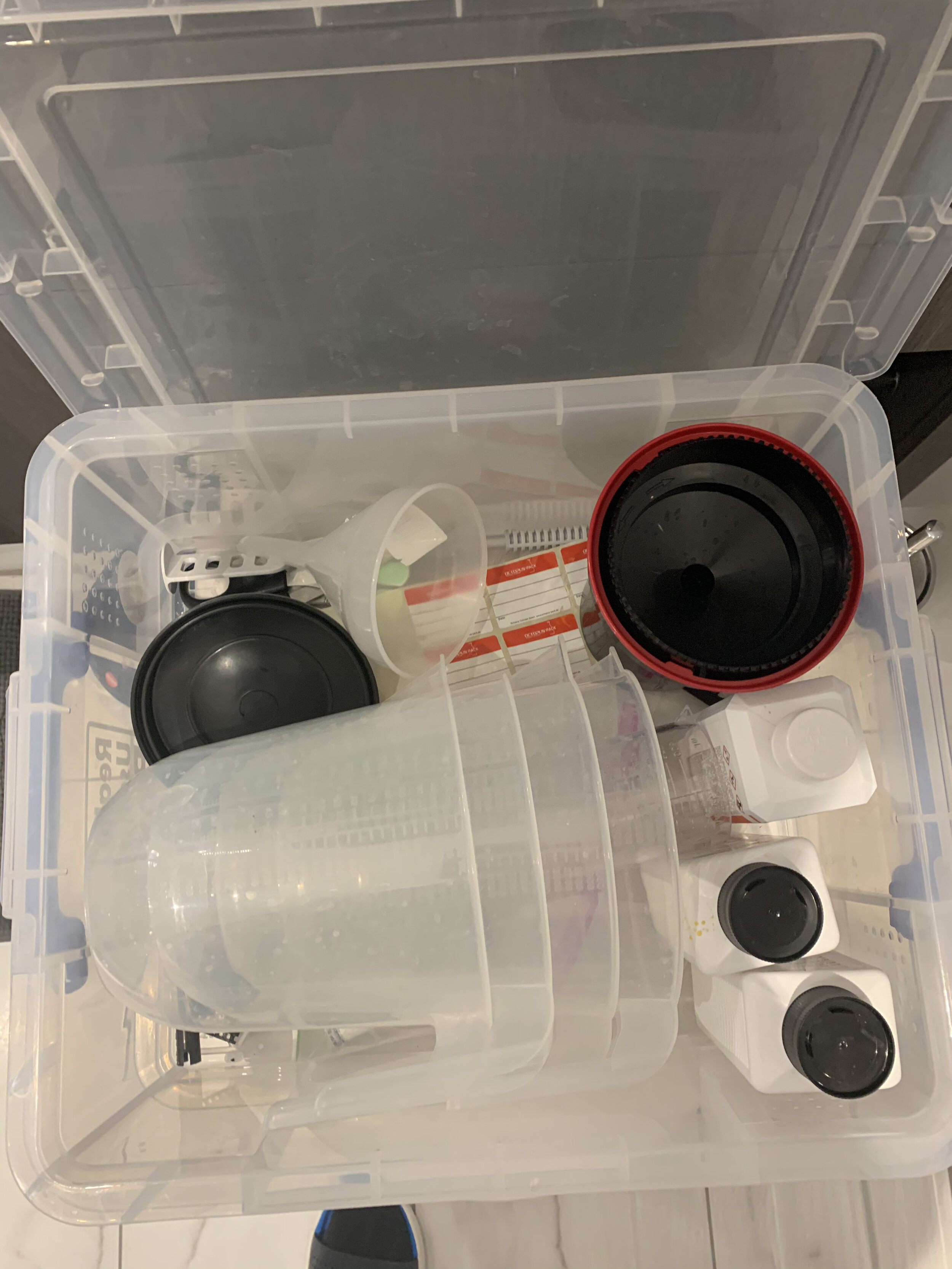

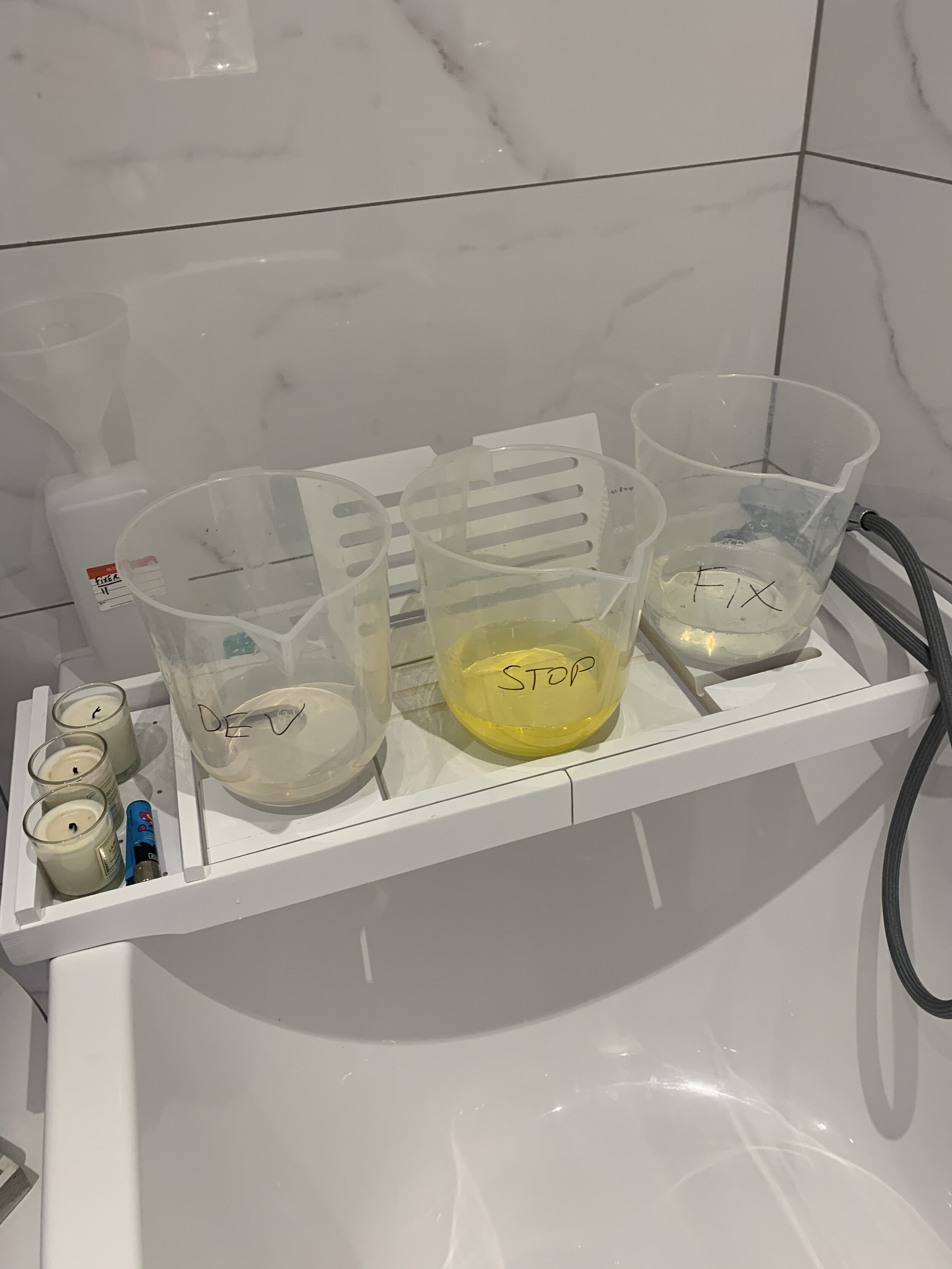
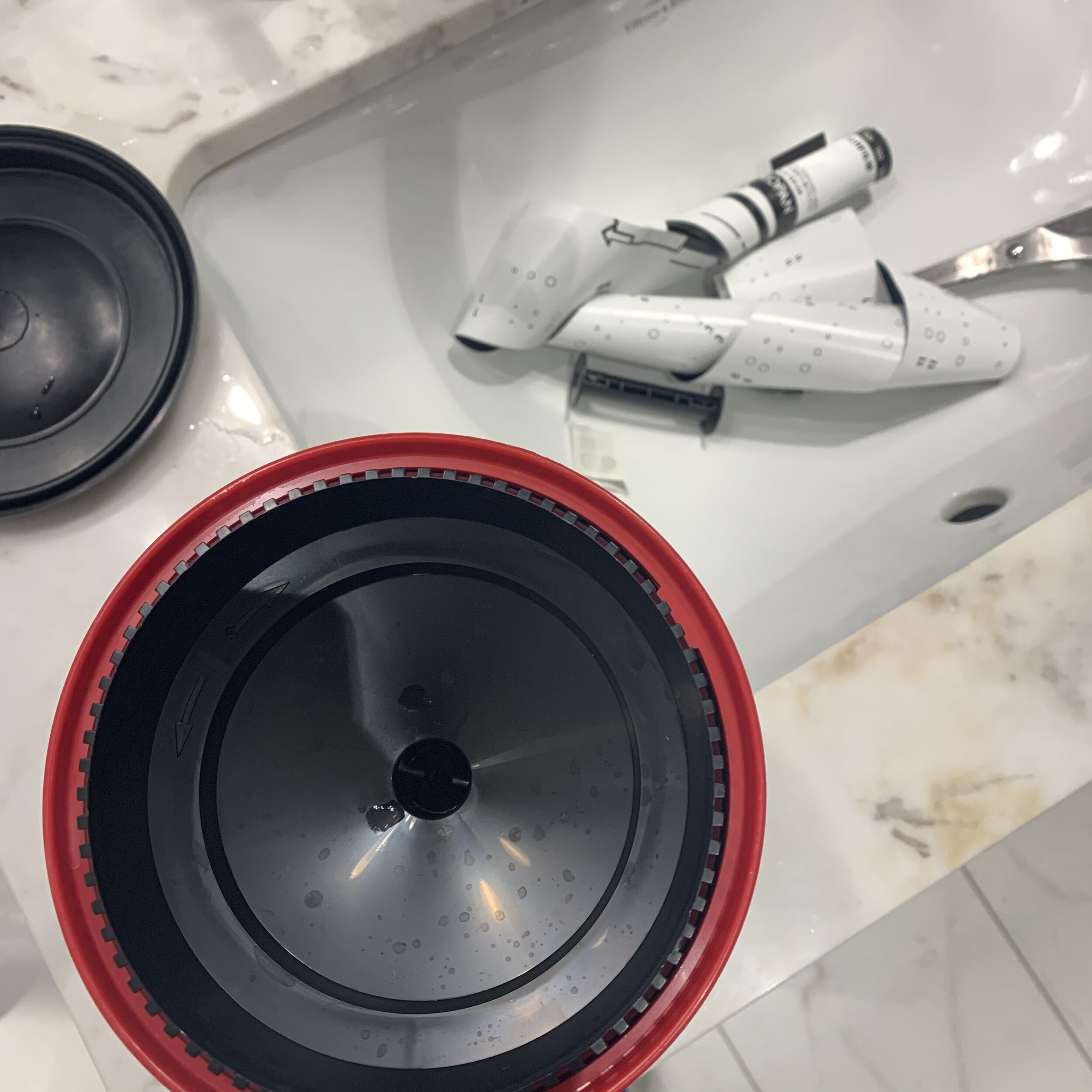
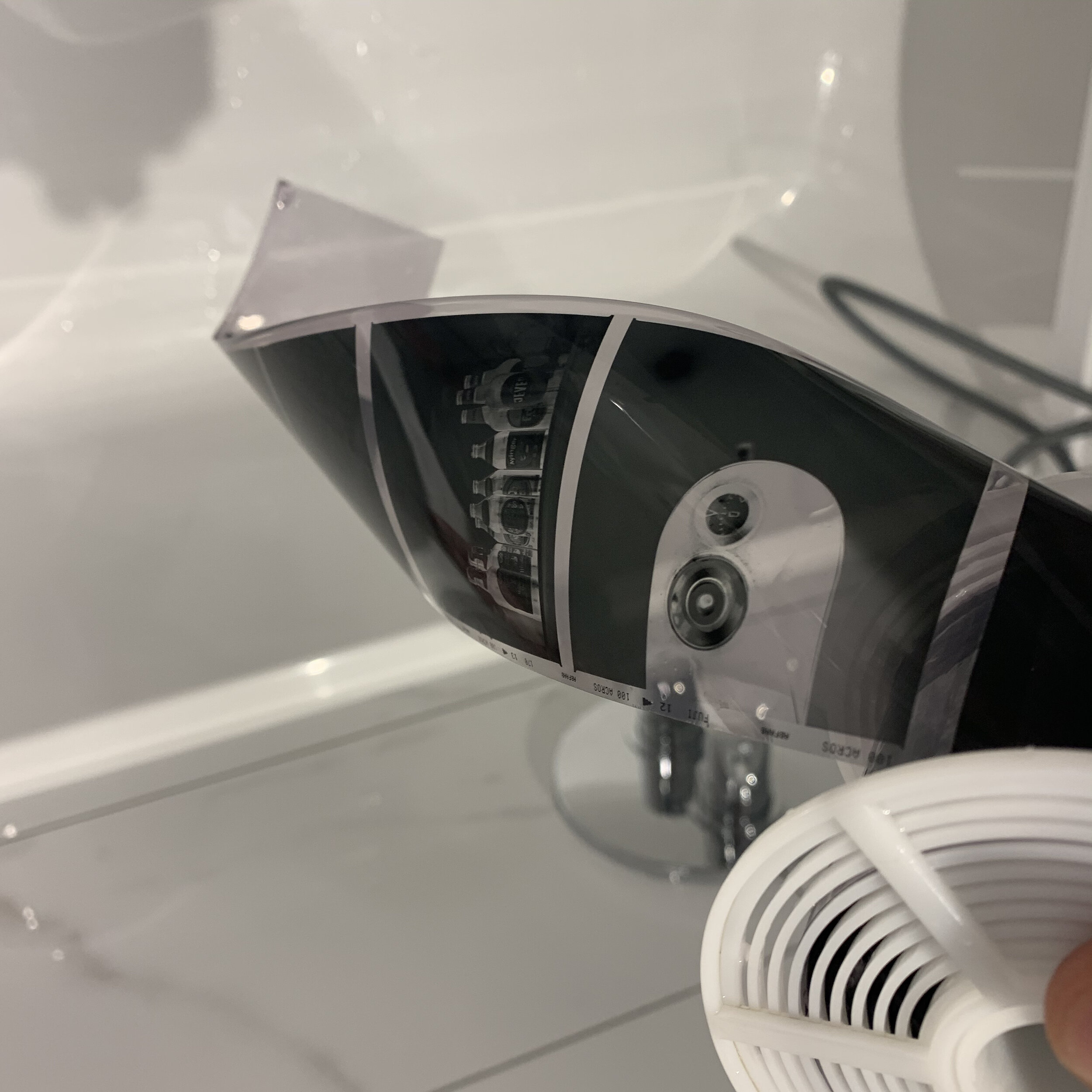
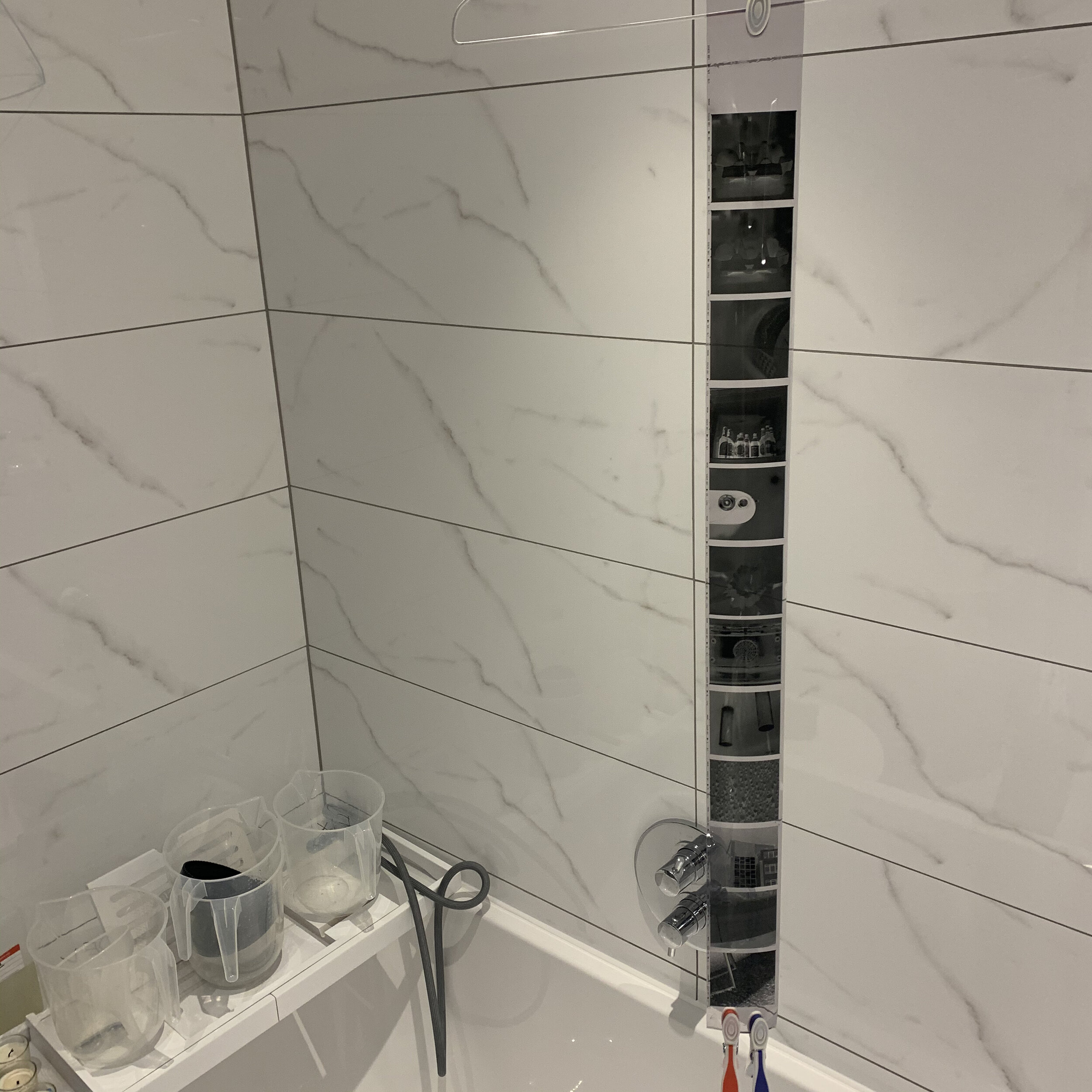
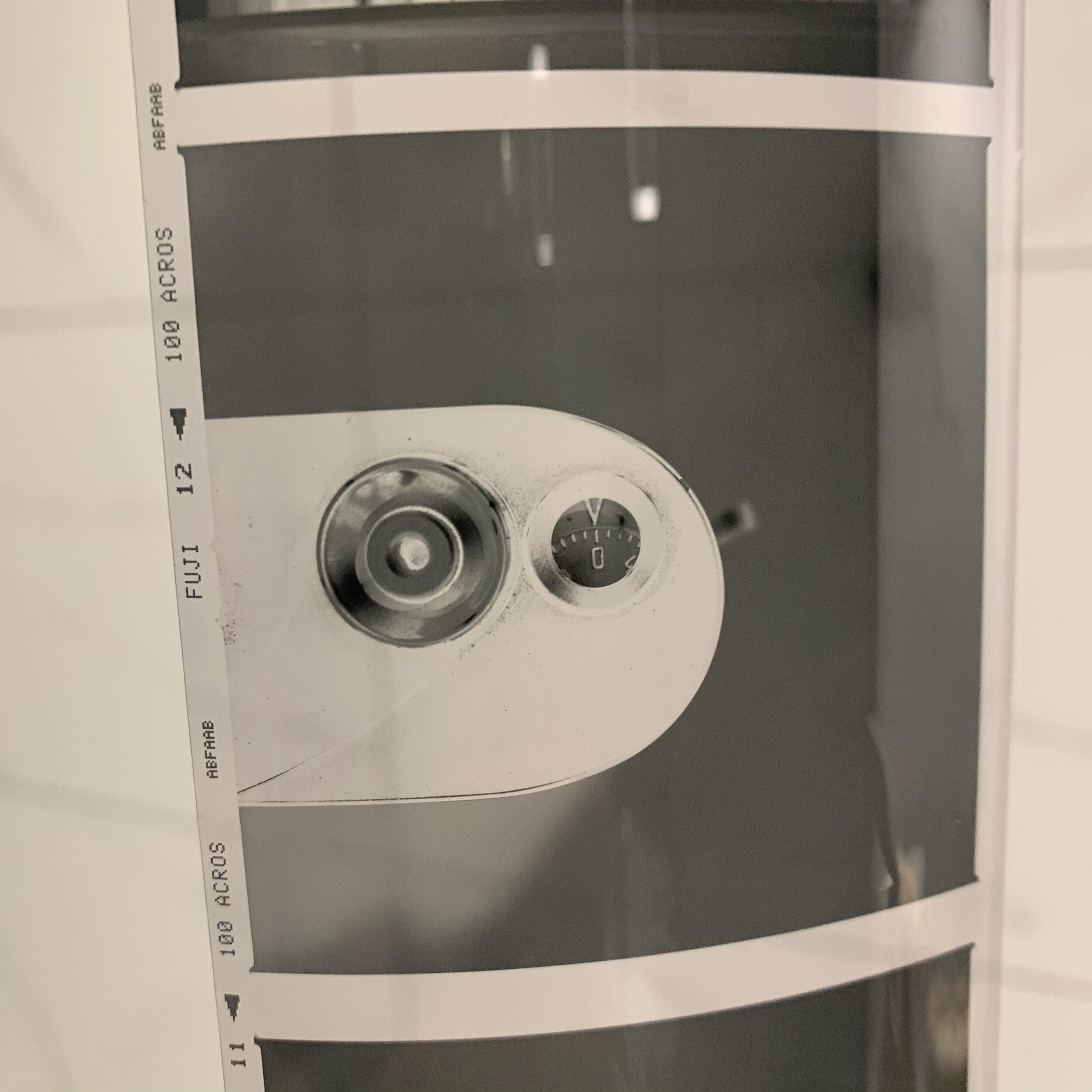
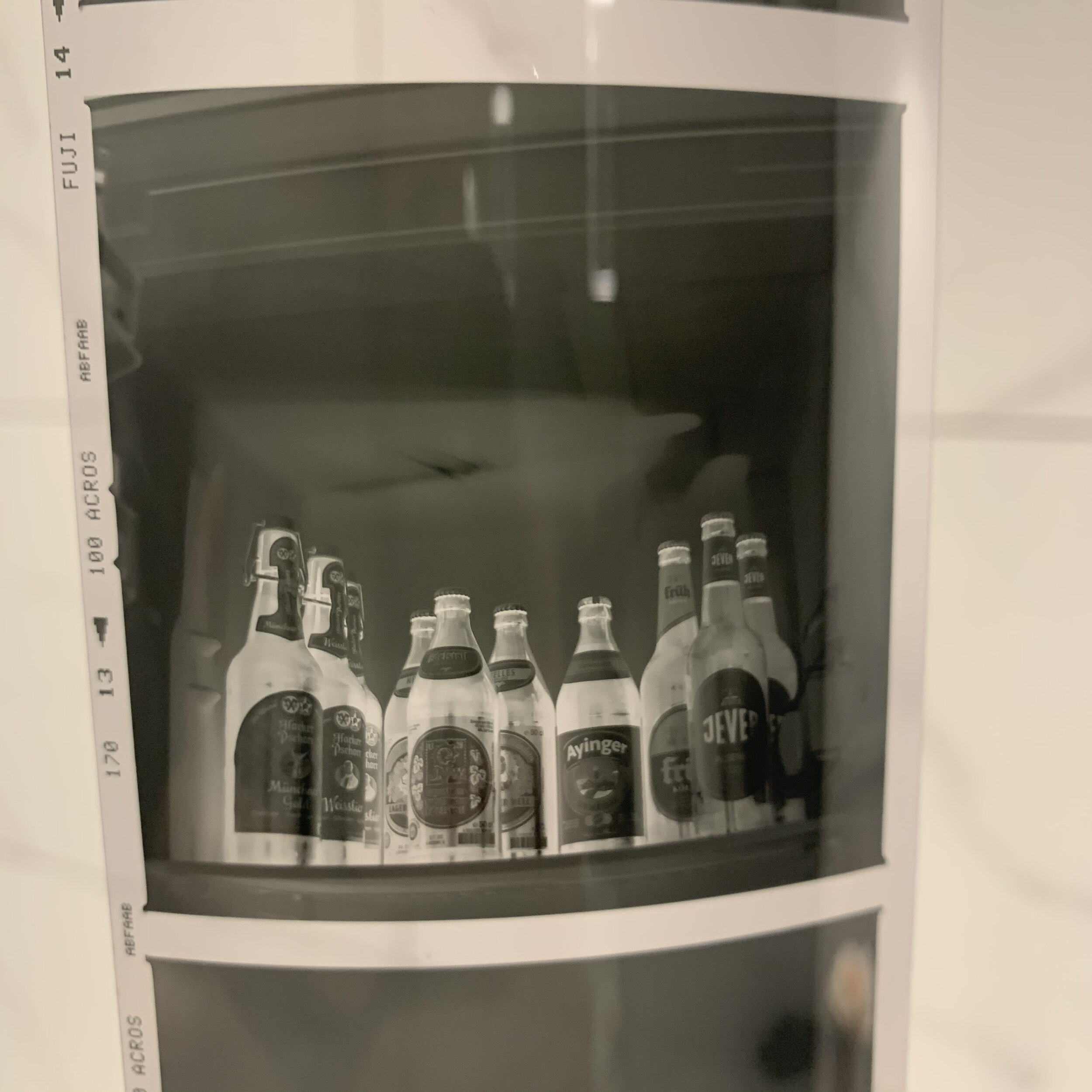
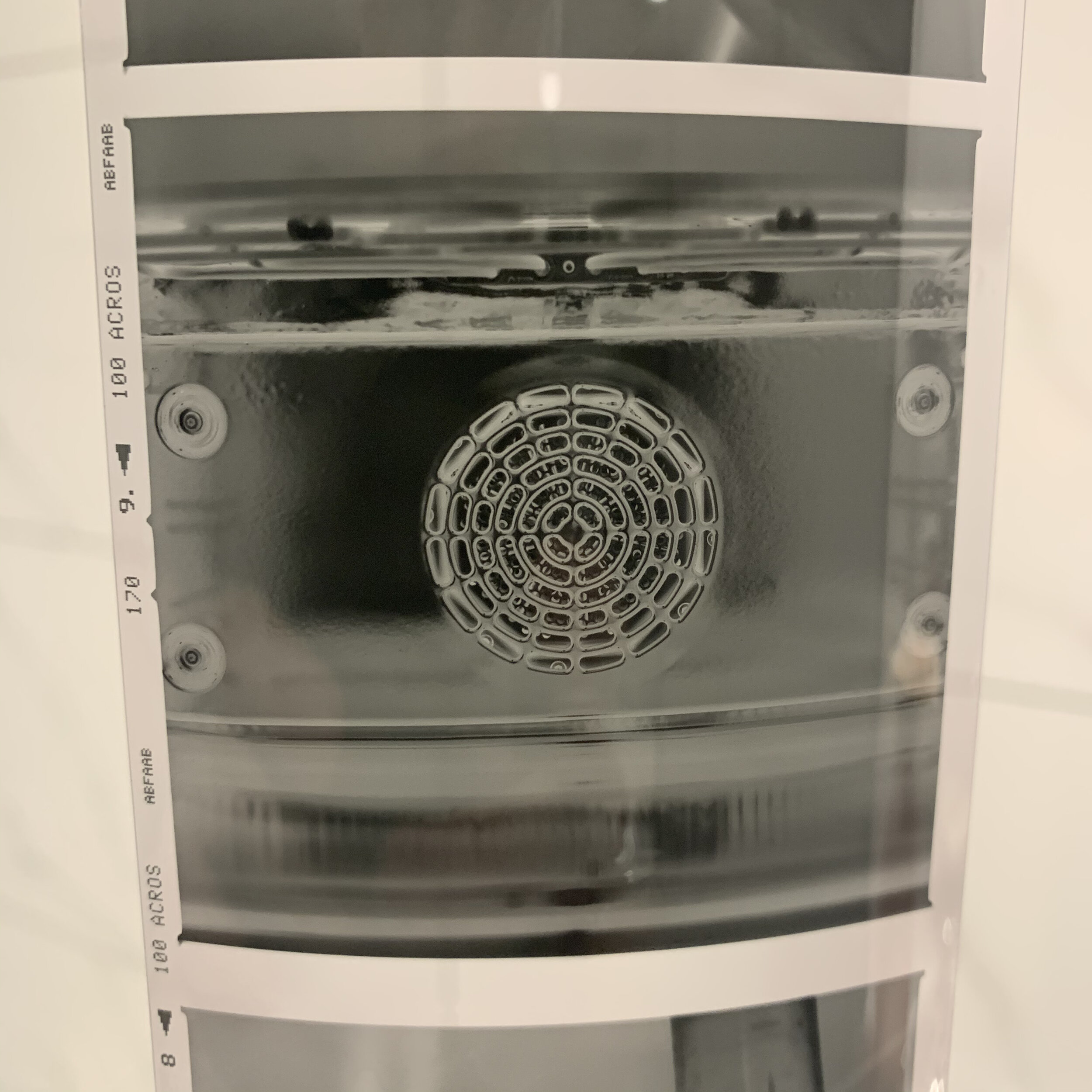
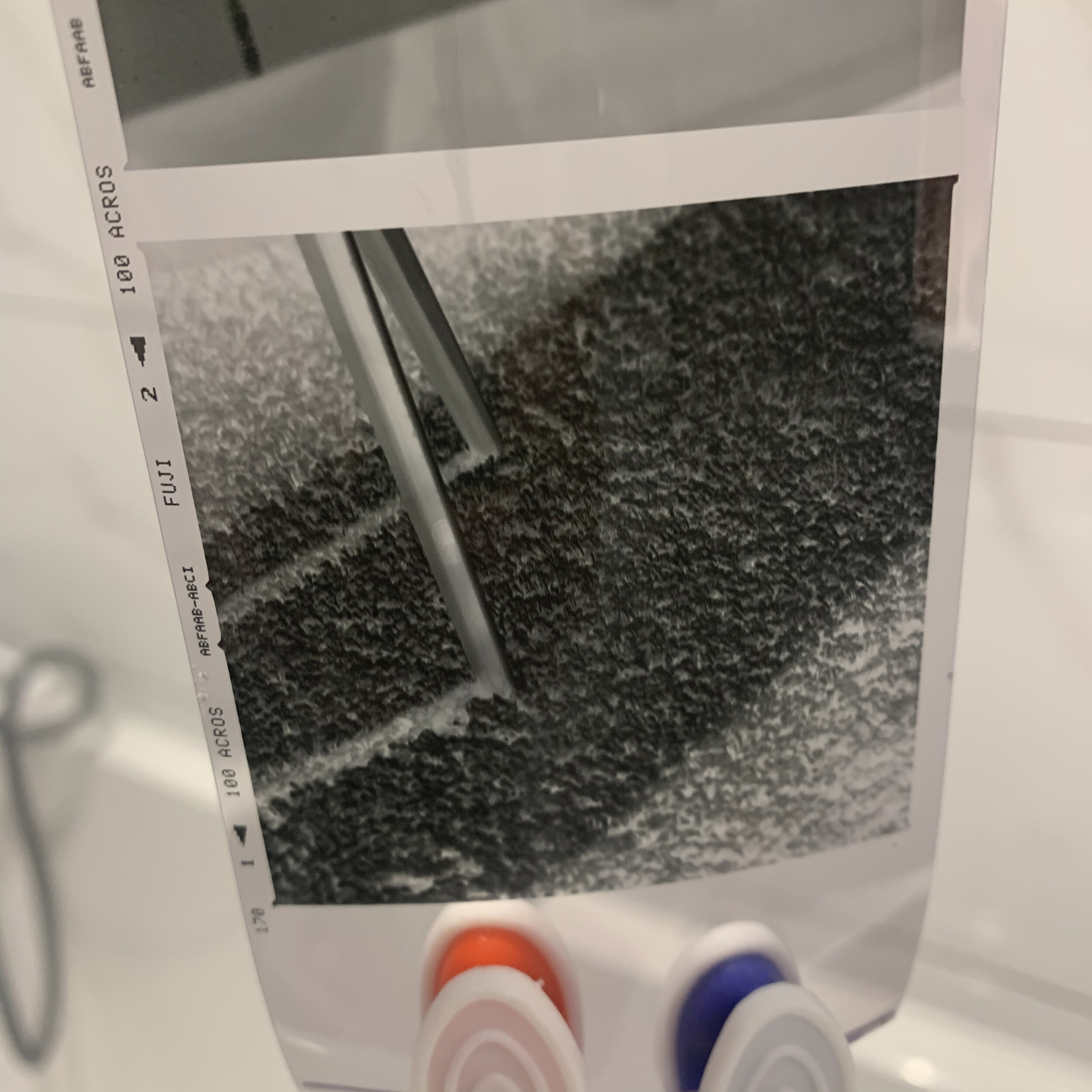
Overall observations
I enjoyed taking all of these shots, and of course, Fuji Acros 100 did not disappoint. However, I am not sure I would use it again with the extension tubes on the Hasselblad (mind you after we are done with all of this I may never use them again!). I think this film excels at f8 or smaller aperture, where you really see how sharp and contrasty it is. I actually think the macro type shots worked better with Ilford Delta 100 film.
I’m glad I used a tripod this time though, I think the photographs were vastly improved because of it. I particularly enjoyed shooting a long exposure for 1 minute! That being said, my Dad is probably right, and I need to get out for a walk!
Thanks for stopping by and checking out me trying to be a bit creative and fill my time over the weekend.
Stay safe and see you next time!
Neil










